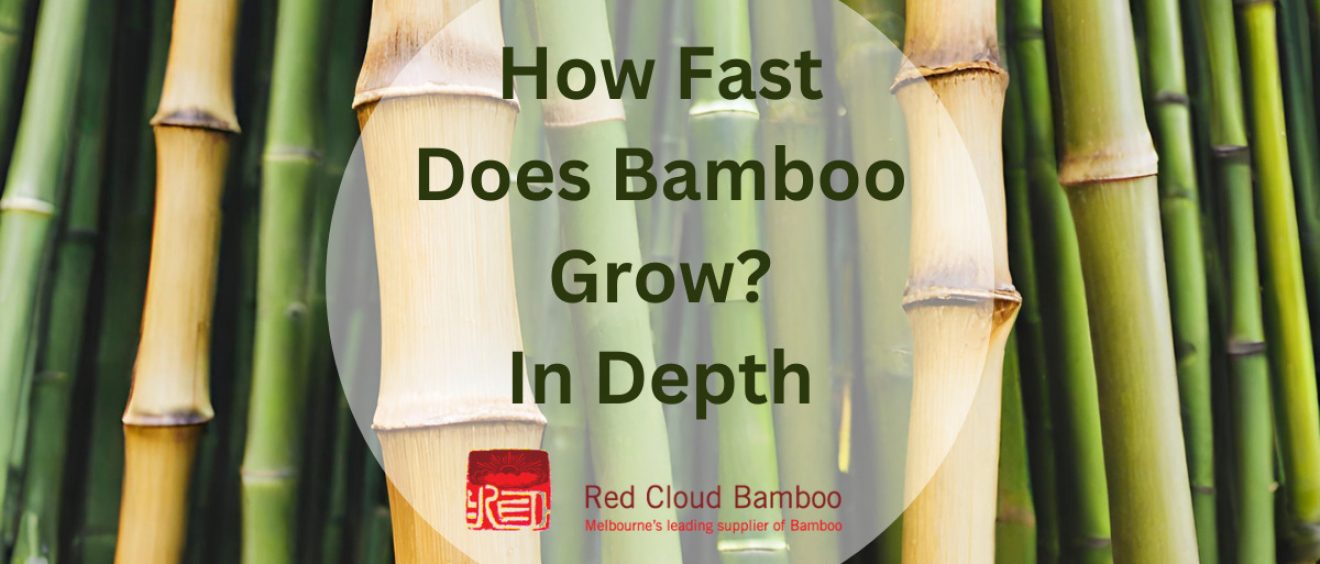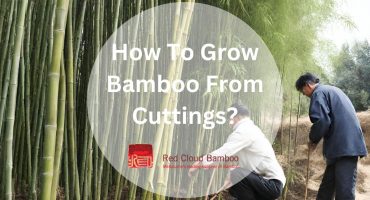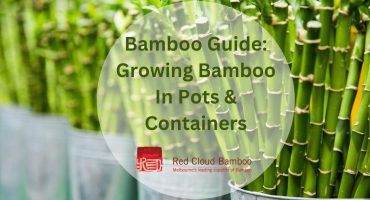
How Fast Does Bamboo Grow?
Bamboo is one of nature’s fastest growing plants on the planet and a sustainable building material.
This article will discuss bamboo’s remarkable growth rates and the factors that influence how swiftly it can multiply. Understanding bamboo’s growth patterns is crucial for landscapers and homeowners using this renewable resource.
We’ll explain the variations bamboo exhibits throughout the seasons and over years, as well as address important considerations like soil, sunlight and precipitation that impact growth. By the end, you’ll have a strong understanding of what drives bamboo’s rapid reproduction and why it’s such an ideal plant.
Bamboo Growth in Summer
In the warm summer months, bamboo thrives with its rapid vertical growth above ground. Many species are capable of growing over 1 foot per day during this period, outpacing nearly all other plants.
The hotter summer temperatures provide ideal growing conditions for bamboo to maximize its photosynthesis and multiply extensively. Clumping varieties will send up thick, green canes vigorously towards the sun while running bamboos spread their rhizomes and elongate stalks quickly.
The moisture and rainfall of summer also support bamboo’s ability to establish an extensive root base for future multiplication. This furious growth spurt during the Australia summer helps bamboo naturally spread to form dense thickets and groves within a single growing season.
Bamboo Growth in Winter
In contrast to summer, bamboo slows its vertical expansion during the colder winter months in Australia.
While growth is less pronounced above ground, bamboo continues developing an extensive underground network of rhizomes below the frost line. During this period, bamboo allocates more resources to strengthen its root base in preparation for the forthcoming spring.
Some cold hardy species like Pleioblastus may continue slow stalk elongation in mild winters, but many types cease or reduce above ground development. While not as conspicuous, this winter widening of rhizomes is equally crucial for bamboo’s prolific multiplication.
By storing carbohydrates below ground when conditions are less hospitable, bamboo ensures its rapid revival once warmer weather returns. This adaptation allows it to flourish year after year as a resilient and productive plant.
How Long Does Bamboo Take To Grow?
Given ideal conditions, some large clumping bamboo types may grow over 3 metres tall annually at peak maturity. and some species of bamboo can grow up to 3 feet per day, and most species can reach their full height and diameter within a few months. For example, Moso Bamboo, the most common species of bamboo used for commercial purposes, can grow up to 60 feet tall in just three months.
The exact amount of time it takes bamboo to grow depends on a number of factors, including the species of bamboo, the climate, and the growing conditions.
Here is a general timeline for the growth of bamboo:
- 0-3 months: The bamboo shoots emerge from the ground and grow rapidly in height and diameter.
- 3-6 months: The bamboo shoots reach their full height and diameter.
- 6-12 months: The bamboo shoots harden and become mature.
- 12-36 months: The bamboo culms (stalks) reach their full strength and durability.
After 36 months, the bamboo culms are ready to be harvested. However, bamboo can continue to grow for many years, and some species of bamboo can live for over 100 years.
Factors Affecting Bamboo’s Growth
Several environmental elements influence the remarkable pace that bamboo can reproduce and spread. Soil nutrition, composition, and drainage have a significant impact.
Bamboo thrives best in moist, well-draining soil rich in organic matter to support robust root development.
Temperatures also guide bamboo’s seasonal shifts; most species demand a minimum of 10°C to initiate growth. Receiving full sun maximizes photosynthesis and subsequent stalk proliferation. Proper pruning is necessary to maintain health and encourage ongoing culm production from the rhizome network.
Ensuring adequate space between bamboo clusters prevents overcrowding and allows for unrestricted upward and lateral expansion. With balanced growing conditions that satisfy bamboo’s needs, their awe-inspiring duplication abilities are fully realized year after year.
Conclusion
In closing, we have discussed bamboo’s truly remarkable growth potential and multiplication rates and the factors that affect its annual performance.
Given its propitious hardy climatic tolerance and nutrient requirements, bamboo undergoes cycles of tremendous productivity that allow it to replace harvested stalks within short succession.
Its favorable growth attributes are what give bamboo such high sustainability as a natural building material and landscape plant.
With proper maintenance of soil, sunlight, drainage, and pruning practices, bamboo plants can be cultivated indefinitely to provide abundant renewable resources.
“Discover the incredible world of bamboo and unlock its limitless potential. Join us at Red Cloud Bamboo, your trusted partner in all things bamboo. Contact us today at 0418 552 170 to explore the possibilities. Or check out our blog for more information about bamboo. Let’s embrace the resilience and beauty of bamboo together!”




